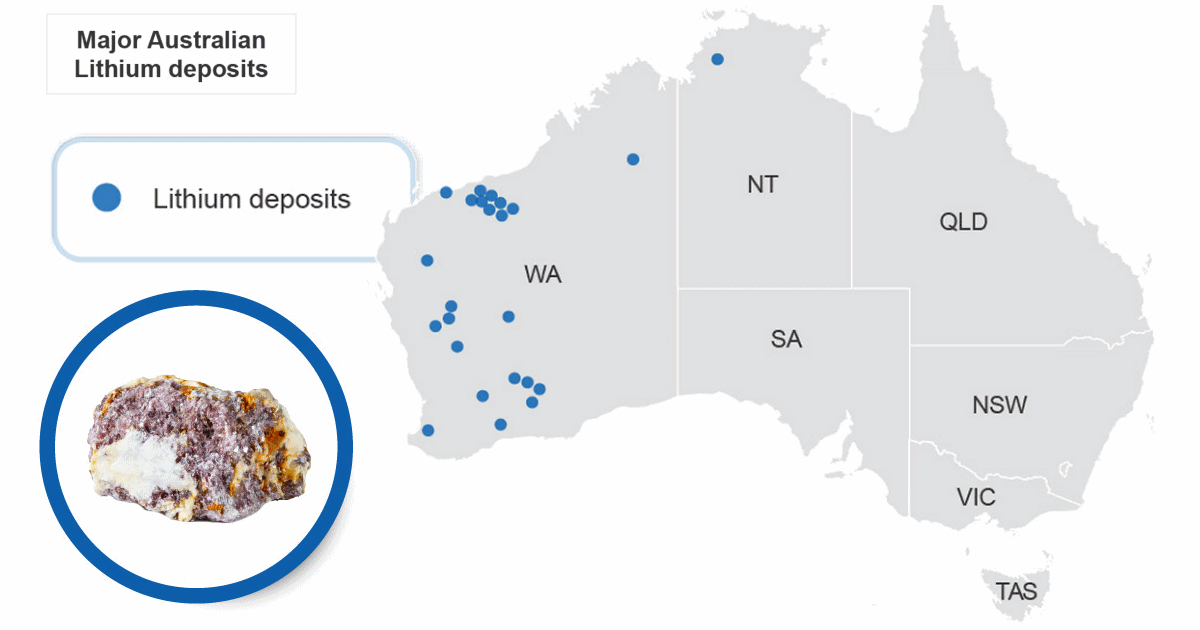
Australian lithium exports will more than double in the next 5 years states a new Federal Government report, and the country could potentially soon snag a significant chunk of the lithium hydroxide production market.
Around three-quarters of the world’s lithium consumption is dedicated to rechargeable batteries used in everything from mobile phones to solar batteries and electric vehicles. Australia is the biggest lithium exporter in the world, accounting for 46% of the world’s production in 2020.
The Federal Government’s latest Resources and Energy Quarterly (REQ) was released yesterday, which contains the Office of the Chief Economist’s forecasts for the value, volume and price of Australia’s major resources and energy commodity exports. On the topic of lithium, the REQ was particularly bullish.
It notes Australia’s lithium production is forecast to grow from 247,000 tonnes of lithium carbonate equivalent (LCE) in 2020–21 to 387,000 tonnes in 2022–23 and 469,000 tonnes in 2023–24. This is against an expected world demand of 583,000 tonnes of LCE in 2021 to 724,000 tonnes in 2022; reaching 1,058,000 tonnes by 2024.
The high demand for lithium has been pushing prices up and combined with increased output means Australia’s related export earnings are forecast to increase by more than ten-fold in just two years; from $1.1 billion in 2020–2 to $13.8 billion in 2022–23; then easing to $12.9 billion by 2023–24.
Beyond Digging Stuff Up
Australia has a reputation for digging stuff out of the ground, not doing a lot with it and then shipping it elsewhere – only to buy it back in finished products. In relation to lithium, there’s much more we can be doing on the value-add front. For example, production of lithium hydroxide.
The first continuous production of battery grade lithium hydroxide in Australia occurred in June at the Kwinana lithium hydroxide refinery in WA – and more facilities are on the way. The REQ says Australia may have – assuming all going well – about 10% of global lithium hydroxide refining capacity by 2024, rising to about 20% by 2027.
And beyond lithium hydroxide refining:
“Australian businesses are expected to continue their expansion into higher value-added activities over the outlook period,” states the REQ. ” Potential avenues include growth up the battery value chain, from mining and refining into precursor chemicals for cathodes, electrolyte production battery anode plants, battery cell research/production, and battery manufacturing.”
More on the latest REQ’s facts, figures and forecasts for Australia’s lithium sector can be found here.
Green Light For Liontown’s Kathleen Valley Project
In other recent related news, Liontown Resources Limited announced on Monday that Western Australia’s Department of Mines, Industry, Regulation and Safety (DMIRS) has approved the Mining Proposal and Mine Closure Plan for its 4Mtpa lithium (spodumene concentrate) and tantalum mining operation at Kathleen Valley; allowing major site works to commence. Buyers including LG Energy Solution, Tesla and Ford have already claimed dibs on a big chunk of the mine’s output.
A hybrid power station is to be built for the project incorporating wind power, solar energy, gas, diesel backup and batteries.

 RSS - Posts
RSS - Posts



Speak Your Mind